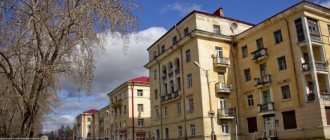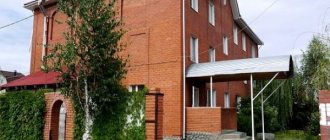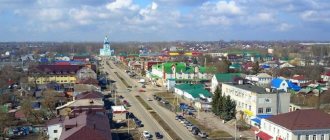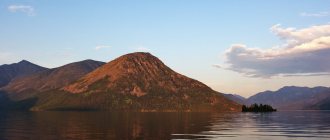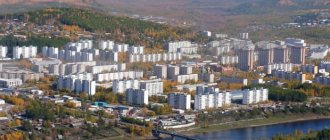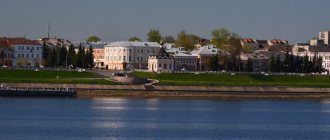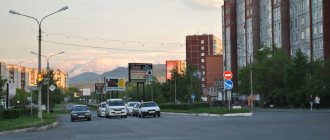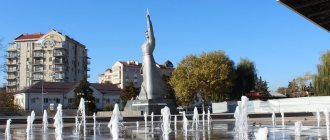Among the eighteen municipal districts of Karelia, Pitkyaranta practically does not stand out in any way. This is a quiet regional center, completely inconspicuous - a typical five-story building, wide streets with rare cars, a house of culture, several monuments and a beach area.
But you can come here for the amazing nature, which amazes with its imagination and ingenuity. Just look at the only road leading to the cities - it winds for eight kilometers along the coast of Lake Ladoga, so that on one side there are overhanging moss-covered rocks and a dense pine forest, and on the other - the blue surface of the lake, smooth as glass in calm weather.
History of creation
One of the most beautiful and history-rich cities in Karelia is Pitkyaranta. It was founded in 1966, translated from Finnish the name means “long shore”. The territory on which it is located was inhabited by tribes of hunters and fishermen eight thousand years ago, and since the end of the 11th century the ancient population of “Korel” lived here. 24 monuments of those times have been preserved; they can be seen on the coast and skerries of the Ladoga region.
The first mention of the village, which was formerly called Kondushi, dates back to 1500, then it consisted of only three households with a population of 30 people, but after 150 years there were 7 households, and the number of residents increased to 50. Most of the territory was farmland, hunting, as a way of obtaining food, faded into the background.
At the beginning of the 17th century, Swedish invaders came to this land, and their presence is associated with the oldest historical site in the area - the Varashev Stone, installed as a border marker between Russia and Sweden in 1918.
After the defeat of Sweden in the Northern War, Pitkäranta returned to the Russian lands. But in 1812, by decree of Alexander I, it passed to the Grand Duchy of Finland; the city again became Russian territory only in 1940.
Pitkäranta gained fame thanks to scientists - metallurgists, geologists and miners. They talked about an unusual almadine stone the color of blackberry juice, and found copper and tin ore. One after another, factories for the extraction and processing of ore began to be built, and after them a glass factory appeared, the products of which were famous for their special strength and quality no worse than the European level. The mines operated until the mid-20th century, but their remains can still be seen today.
Notes
- ↑ 123
www.gks.ru/free_doc/doc_2016/bul_dr/mun_obr2016.rar Population of the Russian Federation by municipalities as of January 1, 2016 - “chapel” in this case means “separate”, that is, it is both a volost and a church parish
- [www.hrono.ru/sobyt/1944fin.html History of the Second World War 1939-1945 in (12 volumes), volume 9, p. 26 - 40 (Chapter 3.)]
- [www.retscreen.net/ru/home.php NASA. RETScreen Database]
- [demoscope.ru/weekly/ssp/rus59_reg2.php All-Union Population Census of 1959. The size of the urban population of the RSFSR, its territorial units, urban settlements and urban areas by gender] (Russian). Demoscope Weekly. Retrieved September 25, 2013. [www.webcitation.org/6GDOghWC9 Archived from the original on April 28, 2013].
- [demoscope.ru/weekly/ssp/rus70_reg2.php All-Union Population Census of 1970 The size of the urban population of the RSFSR, its territorial units, urban settlements and urban areas by gender.] (Russian). Demoscope Weekly. Retrieved September 25, 2013. [www.webcitation.org/6GDOiMstp Archived from the original on April 28, 2013].
- [demoscope.ru/weekly/ssp/rus79_reg2.php All-Union Population Census of 1979 The size of the urban population of the RSFSR, its territorial units, urban settlements and urban areas by gender.] (Russian). Demoscope Weekly. Retrieved September 25, 2013. [www.webcitation.org/6GDOjhZ5L Archived from the original on April 28, 2013].
- [demoscope.ru/weekly/ssp/rus89_reg2.php All-Union Population Census of 1989. Urban population]. [www.webcitation.org/617x0o0Pa Archived from the original on August 22, 2011].
- ↑ 123456789
www.MojGorod.ru/r_karelija/pitkjaranta/index.html People's encyclopedia “My City”. Pitkäranta - [www.perepis2002.ru/ct/doc/1_TOM_01_04.xls All-Russian Population Census 2002. Volume. 1, table 4. Population of Russia, federal districts, constituent entities of the Russian Federation, districts, urban settlements, rural settlements - regional centers and rural settlements with a population of 3 thousand or more]. [www.webcitation.org/65AdCU0q3 Archived from the original on February 3, 2012].
- [www.gks.ru/bgd/regl/B09_109/IssWWW.exe/Stg/d01/tabl-21-09.xls Number of permanent population of the Russian Federation by cities, urban-type settlements and districts as of January 1, 2009]. Retrieved January 2, 2014. [www.webcitation.org/6MJmu0z1u Archived from the original on January 2, 2014].
- krl.gks.ru/wps/wcm/connect/rosstat_ts/krl/resources/47562b004ee289ee8302833467c8ff84/1_Number+and+composition+of the population+RK.docx All-Russian population census 2010. Number and composition of the population of the Republic of Karelia
- [www.gks.ru/free_doc/doc_2012/bul_dr/mun_obr2012.rar Population of the Russian Federation by municipalities. Table 35. Estimated resident population as of January 1, 2012]. Retrieved May 31, 2014. [www.webcitation.org/6PyOWbdMc Archived from the original on May 31, 2014].
- [www.gks.ru/free_doc/doc_2013/bul_dr/mun_obr2013.rar Population of the Russian Federation by municipalities as of January 1, 2013. - M.: Federal State Statistics Service Rosstat, 2013. - 528 p. (Table 33. Population of urban districts, municipal districts, urban and rural settlements, urban settlements, rural settlements)]. Retrieved November 16, 2013. [www.webcitation.org/6LAdCWSxH Archived from the original on November 16, 2013].
- [www.gks.ru/free_doc/doc_2014/bul_dr/mun_obr2014.rar Table 33. Population of the Russian Federation by municipalities as of January 1, 2014]. Retrieved August 2, 2014. [www.webcitation.org/6RWqP50QK Archived from the original on August 2, 2014].
- [www.gks.ru/free_doc/doc_2015/bul_dr/mun_obr2015.rar Population of the Russian Federation by municipalities as of January 1, 2015]. Retrieved August 6, 2015. [www.webcitation.org/6aaNzOlFO Archived from the original on August 6, 2015].
- [gov.karelia.ru/Karelia/2390/40.html Pitkyaranta Local Lore]
- Youth Sports School
- [government.ru/media/files/41d4f68fb74d798eae71.pdf Order of the Government of the Russian Federation of July 29, 2014 No. 1398-r “On approval of the list of single-industry towns”]
- [heninen.net/pitkaranta/historia.htm Pitkäranta]
- [monuments.karelia.ru/ob-ekty-kul-turnogo-nasledija/kniga-velikaja-otechestvennaja-vojna-v-karelii-pamjatniki-i-pamjatnye-mesta/stat-i-ob-ob-ektah-voenno-istoricheskogo -nasledija/pitkjarantskij-rajon/memorial-s-mogiloj-neizvestnogo-soldata/ Memorial with the Tomb of the Unknown Soldier]
- [monuments.karelia.ru/ob-ekty-kul-turnogo-nasledija/spiski-ob-ektov-kul-turnogo-nasledija-po-rajonam-i-poselenijam-respubliki-karelija/pitkjarantskij-rn/spiski-ob-ektov -po-poselenijam/pitkjarantskoe-gorodskoe-poselenie/ Cultural heritage sites on the territory of the Pitkärantskoe urban district]
- [sobory.ru/article/?object=02304 Church of the Ascension of the Lord]
Location
The city of Pitkyaranta in the Republic of Karelia stretches in a narrow strip along Lake Ladoga. It is distinguished by magnificent landscapes - dense taiga, rocks, waterfalls, many rivers and lakes, canyons, skerries and sandy hills. Together with the rich flora and fauna, the area is a unique natural museum where you can get acquainted with various rocks and geological structure.
Tourists will be especially interested in the Ladoga skerries - an interlacing of capes, bays and islands and the Uksinskaya esker ridge, declared a geological monument - the only place in Karelia where mountain pine grows.
Sandy beaches, aeolian dunes and pine forests stretch for kilometers along the shore of the lake.
What is rare for Karelia, Pitkyaranta has developed infrastructure and good transport accessibility to the capital of the region. The border with Finland is only 115 kilometers away (Värtsilä border point).
Coat of arms
The coat of arms was approved in December 1990 (author - architect G. M. Yardov).
At the top of the coat of arms on a red background is the name of the city - the administrative center of the Pitkyaranta region. The coat of arms is a shield divided horizontally in two by two wavy stripes of golden color. Above them, on a blue background, is a sail twisted in the form of a retort, running along the waves, symbolizing the activities of pulp and paper industry enterprises. The lower green field depicts compass arrows arranged into a single sign and two crossed mountain picks, symbolizing the ancient industry of iron and copper mining.
— [ptzgovorit.ru/encyclopedia/gg/geraldika-karelii Heraldry of Karelia]
Economy and population
The population of the city of Pitkäranta in the Republic of Karelia has been constantly declining since 1996; if ten years ago 14,700 people lived here, now there are only 10,530. Such a strong outflow of population is explained by an acute shortage of jobs, the inability to obtain higher education, and weak cultural entertainment sphere, bad medicine. Young people are increasingly leaving in search of a better life in larger cities - Petrozavodsk, St. Petersburg and Moscow.
The economic basis of the city is the forestry, pulp and paper and wood processing industries, which account for 4% of the total production of the entire republic.
Outside of Karelia, Pitkyaranta is known not only for the beauty of the Ladoga skerries, but as the most convenient starting point to the famous island of Valaam.
Climate
- Average annual air temperature - 2.7 °C
- Relative air humidity - 79.3%
- Average wind speed - 3.0 m/s
| Average daily air temperature in Pitkäranta according to NASA[4] | ||||||||||||
| Jan | Feb | Mar | Apr | May | Jun | Jul | Aug | Sep | Oct | But I | Dec | Year |
| −9.9 °C | −9.3 °C | −5.0 °C | 1.8 °C | 8.9 °C | 14.0 °C | 16.4 °C | 14.0 °C | 9.1 °C | 3.5 °C | −3.8 °C | −8.4 °C | 2.7 °C |
Attractions
Museum of Local Lore named after V.F. Sebina
The museum has a large and varied collection of antiquities that tell about the life and culture of the peoples who previously lived on the territory of Pitkäranta, as well as the history of the founding of the city and the development of industry.
House of Culture
In this building, shows of city folklore groups are held on an ongoing basis; interest groups work here, in which they try to involve not only young people, but also the older generation.
Monument to V.I. Lenin
A sculpture dedicated to the leader of the proletariat can be found in the very heart of the city. It does not represent any particular artistic value, but it adds variety to the rather dull city landscape.
Peryakul area
The oldest of all urban areas, it may be of interest to you for its ancient, recognized architectural monuments, houses.
There are no other attractions in the city. You should go a little further for amazing and beautiful places, where there are waterfalls, Ladoga skerries and the path to the island of Valaam. Just look at the photo of Pitkäranta - and Karelia will beckon you.
Urban areas
- Peräkylä (Finnish: Peräkylä)
The oldest part of the village, where farmers settled, as well as a school and a store. It bordered on other areas of the village - Rannankylä and Petäyäkylä.
- Petäjäkylä (Finnish: Petäjäkylä)
Petäjäkylä started from the Market Square. In addition, an Orthodox church, a public school and a stadium were located here.
- Rannankylä (Finnish: Rannankylä)
There was a railway station, a train station, a Russian school, a pier, a shopping center, a post office, a pharmacy and an office of the People's Joint Stock Bank.
- Riseyus (Finnish: Riseys)
There was the building of the defense organization Suoeluskunta (schuetskor) and a casino[20].
- Tehdas (Finnish: Tehdas)
Pulp plant
The former breadwinner of the city, the city-forming enterprise for the production of cellulose, deserves special mention - all types of it are produced here - commercial, electrical insulating and capacitor. In addition to it, they produced pine turpentine and crude tall oil.
It was founded in 1921 by Diesen Wood on the island of Pusunsaari, separated from the city by a narrow part of Pitkäranta Bay. Before the advent of the railway, it was necessary to transport products across Ladoga, and in winter horses saved the day.
Subsequently, the plant was reconstructed more than once and equipped with the most modern equipment, but five years ago the management declared bankruptcy. This event dealt a severe blow to the city’s economy; the outflow of population increased greatly and continues to grow every year.
Excerpt characterizing Pitkärant
“I’m just saying one thing, General,” Kutuzov said with a pleasant grace of expression and intonation, which forced you to listen carefully to every leisurely spoken word. It was clear that Kutuzov himself enjoyed listening to himself. “I only say one thing, General, that if the matter depended on my personal desire, then the will of His Majesty Emperor Franz would have been fulfilled long ago.” I would have joined the Archduke long ago. And believe my honor that for me personally to transfer the highest command of the army to a more knowledgeable and skilled general than me, of which Austria is so abundant, and to relinquish all this heavy responsibility would be a joy for me personally. But circumstances are stronger than us, General. And Kutuzov smiled with an expression as if he was saying: “You have every right not to believe me, and even I don’t care at all whether you believe me or not, but you have no reason to tell me this. And that’s the whole point.” The Austrian general looked dissatisfied, but could not help but respond to Kutuzov in the same tone. “On the contrary,” he said in a grumpy and angry tone, so contrary to the flattering meaning of the words he spoke, “on the contrary, your Excellency’s participation in the common cause is highly valued by His Majesty; but we believe that the present slowdown deprives the glorious Russian troops and their commanders-in-chief of the laurels that they are accustomed to reaping in battles,” he finished his apparently prepared phrase. Kutuzov bowed without changing his smile. “And I am so convinced and, based on the last letter with which His Highness Archduke Ferdinand honored me, I assume that the Austrian troops, under the command of such a skillful assistant as General Mack, have now won a decisive victory and no longer need our help,” said Kutuzov. The general frowned. Although there was no positive news about the defeat of the Austrians, there were too many circumstances that confirmed the general unfavorable rumors; and therefore Kutuzov’s assumption about the victory of the Austrians was very similar to ridicule. But Kutuzov smiled meekly, still with the same expression, which said that he had the right to assume this. Indeed, the last letter he received from Mac's army informed him of the victory and the most advantageous strategic position of the army. “Give me this letter here,” said Kutuzov, turning to Prince Andrei. - If you please, see. - And Kutuzov, with a mocking smile at the ends of his lips, read in German to the Austrian general the following passage from a letter from Archduke Ferdinand: “Wir haben vollkommen zusammengehaltene Krafte, nahe an 70,000 Mann, um den Feind, wenn er den Lech passirte, angreifen und schlagen zu konnen. Wir konnen, da wir Meister von Ulm sind, den Vortheil, auch von beiden Uferien der Donau Meister zu bleiben, nicht verlieren; mithin auch jeden Augenblick, wenn der Feind den Lech nicht passirte, die Donau ubersetzen, uns auf seine Communikations Linie werfen, die Donau unterhalb repassiren und dem Feinde, wenn er sich gegen unsere treue Allirte mit ganzer Macht wenden wollte, seine Absicht alabald vereitelien. Wir werden auf solche Weise den Zeitpunkt, wo die Kaiserlich Ruseische Armee ausgerustet sein wird, muthig entgegenharren, und sodann leicht gemeinschaftlich die Moglichkeit finden, dem Feinde das Schicksal zuzubereiten, so er verdient.” [We have quite concentrated forces, about 70,000 people, so that we can attack and defeat the enemy if he crosses Lech. Since we already own Ulm, we can retain the benefit of command of both banks of the Danube, therefore, every minute, if the enemy does not cross the Lech, cross the Danube, rush to his communication line, and below cross the Danube back to the enemy, if he decides to turn all his power on our faithful allies, prevent his intention from being fulfilled. In this way, we will cheerfully await the time when the imperial Russian army is completely ready, and then together we will easily find the opportunity to prepare for the enemy the fate he deserves.”] Kutuzov sighed heavily, ending this period, and looked attentively and affectionately at the member of the Gofkriegsrat. “But you know, Your Excellency, the wise rule is to assume the worst,” said the Austrian general, apparently wanting to end the jokes and get down to business. He involuntarily looked back at the adjutant. “Excuse me, General,” Kutuzov interrupted him and also turned to Prince Andrei. - That's it, my dear, take all the reports from our spies from Kozlovsky. Here are two letters from Count Nostitz, here is a letter from His Highness Archduke Ferdinand, here is another,” he said, handing him several papers. - And from all this, neatly, in French, compose a memorandum, a note, for the sake of visibility of all the news that we had about the actions of the Austrian army. Well, then, introduce him to his Excellency. Prince Andrei bowed his head as a sign that he understood from the first words not only what was said, but also what Kutuzov wanted to tell him. He collected the papers, and, making a general bow, quietly walking along the carpet, went out into the reception room. Despite the fact that not much time has passed since Prince Andrei left Russia, he has changed a lot during this time. In the expression of his face, in his movements, in his gait, the former pretense, fatigue and laziness were almost not noticeable; he had the appearance of a man who does not have time to think about the impression he makes on others, and is busy doing something pleasant and interesting. His face expressed more satisfaction with himself and those around him; his smile and gaze were more cheerful and attractive. Kutuzov, whom he caught up with in Poland, received him very kindly, promised him not to forget him, distinguished him from other adjutants, took him with him to Vienna and gave him more serious assignments. From Vienna, Kutuzov wrote to his old comrade, the father of Prince Andrei: “Your son,” he wrote, “gives hope of becoming an officer, out of the ordinary in his studies, firmness and diligence. I consider myself lucky to have such a subordinate at hand.” At Kutuzov's headquarters, among his comrades and colleagues, and in the army in general, Prince Andrei, as well as in St. Petersburg society, had two completely opposite reputations. Some, a minority, recognized Prince Andrei as something special from themselves and from all other people, expected great success from him, listened to him, admired him and imitated him; and with these people Prince Andrei was simple and pleasant. Others, the majority, did not like Prince Andrei, considered him a pompous, cold and unpleasant person. But with these people, Prince Andrei knew how to position himself in such a way that they respected him and even feared him. Coming out of Kutuzov’s office into the reception area, Prince Andrei with papers approached his comrade, the adjutant on duty Kozlovsky, who was sitting by the window with a book. - Well, what, prince? – asked Kozlovsky. “We were ordered to write a note explaining why we shouldn’t go ahead.” - And why? Prince Andrey shrugged his shoulders. - No news from Mac? – asked Kozlovsky. - No. “If it were true that he was defeated, then the news would come.” “Probably,” said Prince Andrei and headed towards the exit door; but at the same time, a tall, obviously visiting, Austrian general in a frock coat, with a black scarf tied around his head and with the Order of Maria Theresa around his neck, quickly entered the reception room, slamming the door. Prince Andrei stopped. - General Chief Kutuzov? - the visiting general quickly said with a sharp German accent, looking around on both sides and walking without stopping to the office door. “The general in chief is busy,” said Kozlovsky, hastily approaching the unknown general and blocking his path from the door. - How would you like to report? The unknown general looked contemptuously down at the short Kozlovsky, as if surprised that he might not be known. “The general in chief is busy,” Kozlovsky repeated calmly. The general's face frowned, his lips twitched and trembled. He took out a notebook, quickly drew something with a pencil, tore out a piece of paper, gave it to him, walked quickly to the window, threw his body on a chair and looked around at those in the room, as if asking: why are they looking at him? Then the general raised his head, craned his neck, as if intending to say something, but immediately, as if casually starting to hum to himself, he made a strange sound, which immediately stopped. The door to the office opened, and Kutuzov appeared on the threshold. The general with his head bandaged, as if running away from danger, bent down and approached Kutuzov with large, fast steps of his thin legs. “Vous voyez le malheureux Mack, [You see the unfortunate Mack.],” he said in a broken voice. The face of Kutuzov, standing in the doorway of the office, remained completely motionless for several moments. Then, like a wave, a wrinkle ran across his face, his forehead smoothed out; He bowed his head respectfully, closed his eyes, silently let Mac pass by him and closed the door behind himself. The rumor, already spread before, about the defeat of the Austrians and the surrender of the entire army at Ulm, turned out to be true. Half an hour later, adjutants were sent in different directions with orders proving that soon the Russian troops, which had hitherto been inactive, would have to meet the enemy. Prince Andrei was one of those rare officers at the headquarters who believed his main interest was in the general course of military affairs. Having seen Mack and heard the details of his death, he realized that half of the campaign was lost, understood the difficulty of the position of the Russian troops and vividly imagined what awaited the army, and the role that he would have to play in it. Involuntarily, he experienced an exciting, joyful feeling at the thought of disgracing arrogant Austria and the fact that in a week he might have to see and take part in a clash between the Russians and the French, for the first time since Suvorov. But he was afraid of the genius of Bonaparte, who could be stronger than all the courage of the Russian troops, and at the same time could not allow shame for his hero. Excited and irritated by these thoughts, Prince Andrei went to his room to write to his father, to whom he wrote every day. He met in the corridor with his roommate Nesvitsky and the joker Zherkov; They, as always, laughed at something. -Why are you so gloomy? – Nesvitsky asked, noticing the pale face of Prince Andrei with sparkling eyes. “There’s no point in having fun,” Bolkonsky answered. While Prince Andrei met with Nesvitsky and Zherkov, on the other side of the corridor, Strauch, an Austrian general who was at Kutuzov’s headquarters to monitor the food supply of the Russian army, and a member of the Gofkriegsrat, who had arrived the day before, walked towards them. There was enough space along the wide corridor for the generals to freely disperse with three officers; but Zherkov, pushing Nesvitsky away with his hand, said in a breathless voice:
Literature[ | ]
- Sidorovich V. D. Pitkyaranta. - Petro, 1975. - 126 p.: ill. — (Cities and regions of Karelia)
- Ksenofontov P. A. Pitkyaranta. - Petro, 1986. - 152 p.: ill. — (Cities and regions of Karelia)
- Karelia: encyclopedia: in 3 volumes / chapter. ed. A. F. Titov. T. 2: K - P. - Petro, 2009. - 464 pp.: ill., map. — P. 387 ISBN 978-5-8430-0125-4 (vol. 2)
- Pitkäranta: Rec. decree. lit. / National b-ka Rep. Karelia. - Petrozavodsk: B. i., 1995. - 53 p. — (Cities and regions of Karelia).
- Pospelov E. M.
Geographical names of Russia. Toponymic dictionary. - M.: Astrel, AST, 2008. - 523 p. — 1500 copies. — ISBN 978-5-17-054966-5.
Population[ | ]
| Population | ||||||
| 1959[9] | 1970[10] | 1979[11] | 1989[12] | 1996[13] | 1998[13] | 2000[13] |
| 6204 | ↗10 251 | ↗13 839 | ↗14 361 | ↗14 700 | ↘14 500 | ↘14 400 |
| 2001[13] | 2002[14] | 2005[13] | 2006[13] | 2007[13] | 2008[13] | 2009[15] |
| ↘14 300 | ↘13 347 | ↘13 200 | ↘13 000 | ↘12 900 | ↘12 800 | ↘12 616 |
| 2010[16] | 2011[13] | 2012[17] | 2013[18] | 2014[19] | 2015[20] | 2016[21] |
| ↘11 429 | ↘11 400 | ↘11 245 | ↘11 089 | ↘10 945 | ↘10 751 | ↘10 705 |
| 2017[22] | 2018[23] | 2019[24] | 2020[25] | 2021[1] | ||
| ↘10 589 | ↘10 479 | ↘10 307 | ↘10 184 | ↘10 048 | ||
As of January 1, 2022, in terms of population, the city was in 916th place out of 1116[26]cities of the Russian Federation[27].
Attractions[ | ]
Pitkyaranta, monument “Glory to the Heroes”, Pitkyaranta, st.
Lenin, 158-160. Historical monuments[32]:
- Memorial of Glory in memory of Soviet soldiers who died during the Great Patriotic War, with the Tomb of the Unknown Soldier (project author: architect Yu. Yu. Karma)[33]. The memorial was opened on June 10, 1977[32].
- Monument to Soviet soldiers-liberators (45-mm artillery gun). Installed in 1979.
- Mass grave of Soviet soldiers who died during the Soviet-Finnish wars of 1939-1940 and 1941-1944. 48 soldiers are buried in the grave. Among those buried are Heroes of the Soviet Union, brigade commander P. P. Borisov and lieutenant S. Ya. Kireev. In 1965, a monument was erected at the mass grave.
- Mass grave of Soviet soldiers who died during the Soviet-Finnish wars of 1939-1940 and 1941-1944. 535 soldiers were buried in the grave. Most of them are soldiers of the 7th Army of the Karelian Front, participants in the assault on Pitkäranta and subsequent battles in July-August 1944. Heroes of the Soviet Union - senior sergeant G. A. Ekimov and junior lieutenant D. F. Petrenko - are buried in a mass grave. In 1979, a monument in the form of a block of pink granite was erected at the grave.
- Mass grave of Soviet soldiers. 664 soldiers were buried in the grave. Most of them are soldiers of the 7th Army of the Karelian Front, participants in the assault on Pitkäranta and subsequent battles in July-August 1944. Among those buried is Hero of the Soviet Union, senior sergeant V.V. Chernyaev. In 1958, a sandstone stele was installed on the grave.
- Mass grave of Soviet soldiers near Lake Perälampi. 19 soldiers, participants in the assault on Pitkäranta and subsequent battles in July-August 1944, are buried in the grave. Among those buried is Hero of the Soviet Union, Sergeant I. P. Martynenko
- Complex of burial places of Soviet soldiers on the 7th km of Petrozavodsk highway.
- Memorial complex “Valley of Heroes” on the 14th km of Petrozavodsk highway. Over 2,000 Soviet soldiers were buried in 4 mass graves.
In 2000, the construction of the Orthodox wooden Church of the Ascension of the Lord was completed[34]. The temple was built a few meters from the Church of the Ascension, destroyed during the Soviet era[35].
Economics[ | ]
By Order of the Government of the Russian Federation dated July 29, 2014 No. 1398-r “On approval of the list of single-industry towns,” the city was included in the category “Single-industry municipalities of the Russian Federation (single-industry towns) with the most difficult socio-economic situation” [30].
The city is located Tsellulozny. The leading place in the city's economy was occupied by the timber and mining complex.
The city has a railway station. Passenger service was discontinued in 2015. In 2022, traffic was resumed: in winter, several flights of the experimental Moscow-Pitkyaranta train took place, then the only passenger train through the station became the daily commuter train Sortavala - Lodeynoye Pole.
Symbolism[ | ]
Main articles: Coat of arms of Pitkäranta
and
Flag of the Pitkyaranta urban settlement.
The coat of arms and flag were approved on September 15, 2016.
Description of the coat of arms:
In a green field under an azure (blue, light blue) wavy head, encumbered at the waist with a scroll, bordered with silver, double-threaded with black - two picks crosswise and on top of them - a vesuri (national Karelian lopper). All figures are silver. The shield is topped with a municipal crown of the established pattern
Flag description:
The flag is a rectangular panel with a flag width to length ratio of 2:3, reproducing the composition of the coat of arms of the Pitkyaranta urban settlement in blue, white, green and black colors
